How to Force Flowering Branches to Bloom Indoors
Are you longing for spring and all the fabulous flowers that come with it? In this post, I’ll show you how easy it is to force flowering branches to bloom indoors so you can enjoy an “early breath of spring.”
If you’re a flower girl like me, this is a hard time of year when a little pick-me-up is needed to cure those wintertime blues. I have some gardening magic to bring those gorgeous blooms inside, even when there’s still frost on the ground.
Did you know that you can actually convince spring branches to bloom early indoors? And it’s surprisingly simple! While the outside world screams winter, you can create your own private spring preview in your living room.
All it takes is a few fresh-cut branches from your favorite spring-flowering trees, a vase of water, and a little patience. Think of it as giving Mother Nature a gentle nudge to wake up early in your home. Perfect for those days when you’re dreaming of some color and can’t wait another minute for spring to arrive!
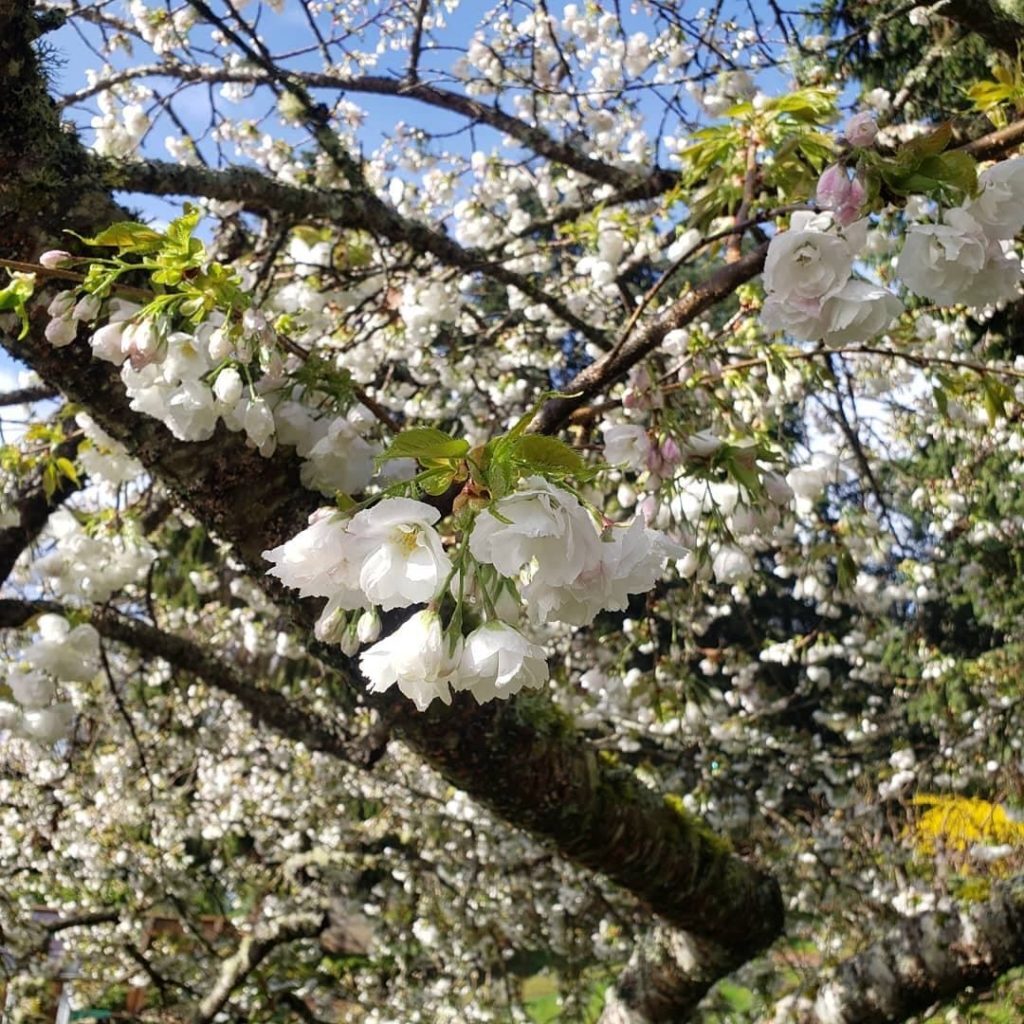
As an Amazon affiliate, I earn a commission from qualifying purchases at no additional cost to you. My blog also features other affiliate links for your convenience. Click here to read my privacy policy.
What Are Forced Branches?

Forced branches are a wonderful way to bring a touch of spring indoors while the outside garden still sleeps in winter.
The idea is simple: cut a few branches from spring’s early blooming shrubs and trees (think forsythia, cherry blossoms, magnolias, or pussy willows) before they’re ready to flower outdoors.
It’s like having a fast-forward button for spring!
What Triggers Plants to Bloom?
Once the branches are brought inside and placed in water, they’re exposed to warmer temperatures and more consistent light than outdoors during winter.
This ‘forcing’ process tricks the branches into thinking that spring has arrived, causing them to bloom weeks ahead of the plant’s natural blooming time. The result is an early burst of color and beauty in your home, giving you a sneak peek at the upcoming spring season.
Best Flowering Branches to Force Bloom
Here are some of the spring-flowering trees and shrubs you can force to bloom indoors during the several weeks of winter that are left:
When To Force Bloom
The best time to begin forcing spring-blooming branches is once the night temperatures are consistently between 33-41°F.
After at least six weeks of cold weather, the buds on many flowering trees and shrubs from the previous year have already formed. At that point, they’re still dormant for a few more weeks until warmer weather arrives.
January through late February, and even early March, are great months for force-blooming flowering branches. However, you can also bring branches indoors just before they’re ready to bloom outdoors with plump buds that are already starting to swell.
How Long Does it Take to Force Branches?
The time it takes to force branches into bloom varies depending on the type of plant and the conditions you provide them.
Generally, most branches will bloom indoors within 1 to 3 weeks after being cut. Early-blooming species like forsythia, witch hazel, and pussy willow tend to awaken more quickly, often in as little as one week.
On the other hand, late bloomers such as magnolia or cherry can take up to four weeks. The key factors that influence this process include the maturity of the buds at the time of cutting, the indoor temperature, and the amount of light the branches receive.
Keeping them in a warmer, well-lit room accelerates the blooming process.
Forcing Branches to Bloom in 6 Steps

To force spring-flowering trees and shrubs into blooming this winter, here are some simple steps:
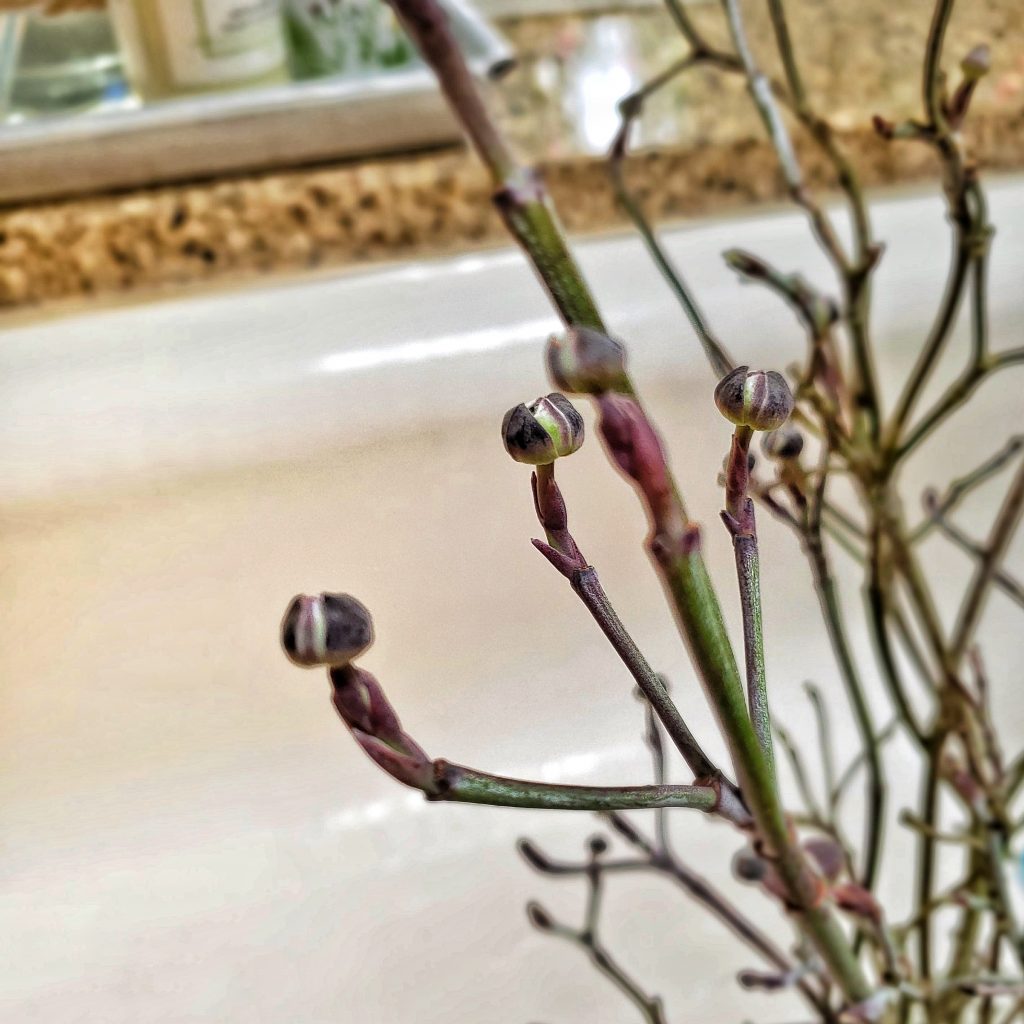
1: Choose branches from spring-flowering trees with lots of plump flower buds that are evenly spaced along the length of the branch.
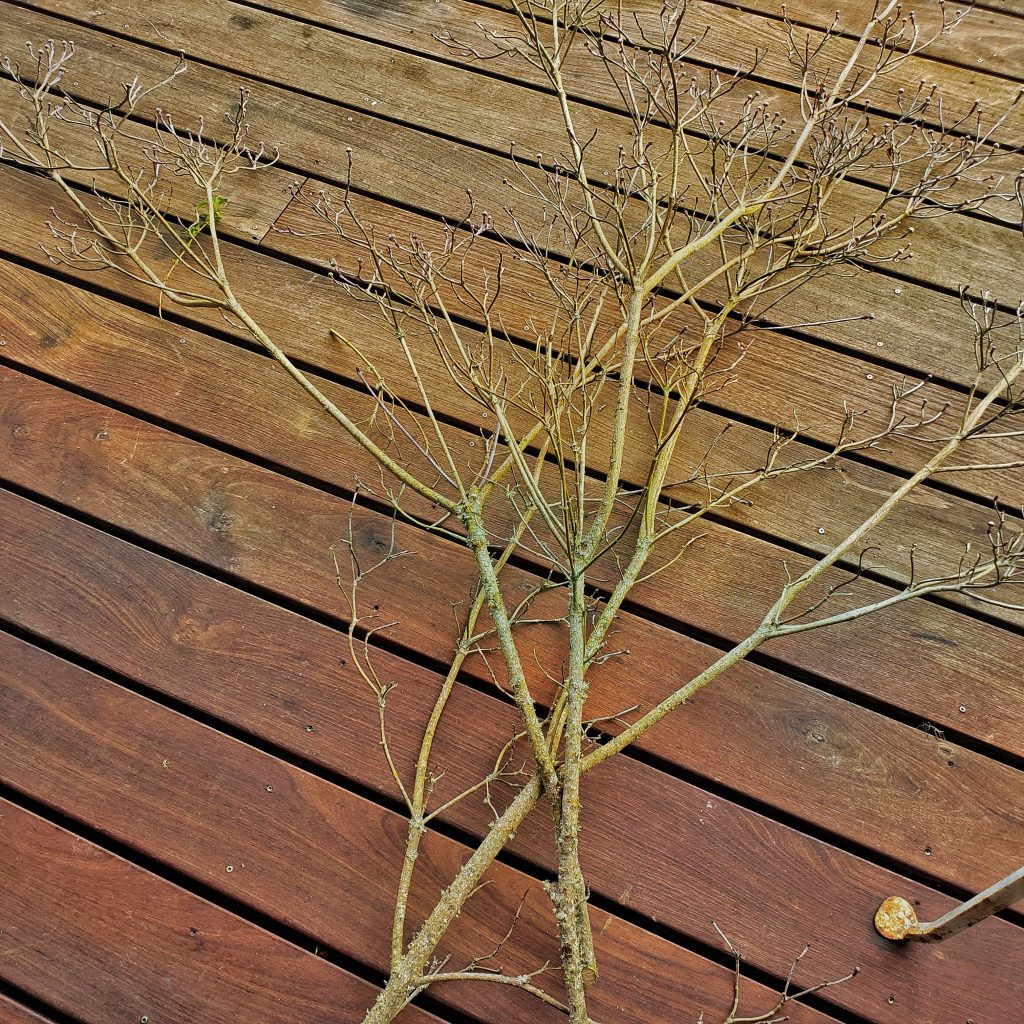
2: Cut off healthy-looking branches, leaving a few inches of stem at the end.
3: For best results, submerge the cut end of the branches in water for several hours before bringing them indoors.
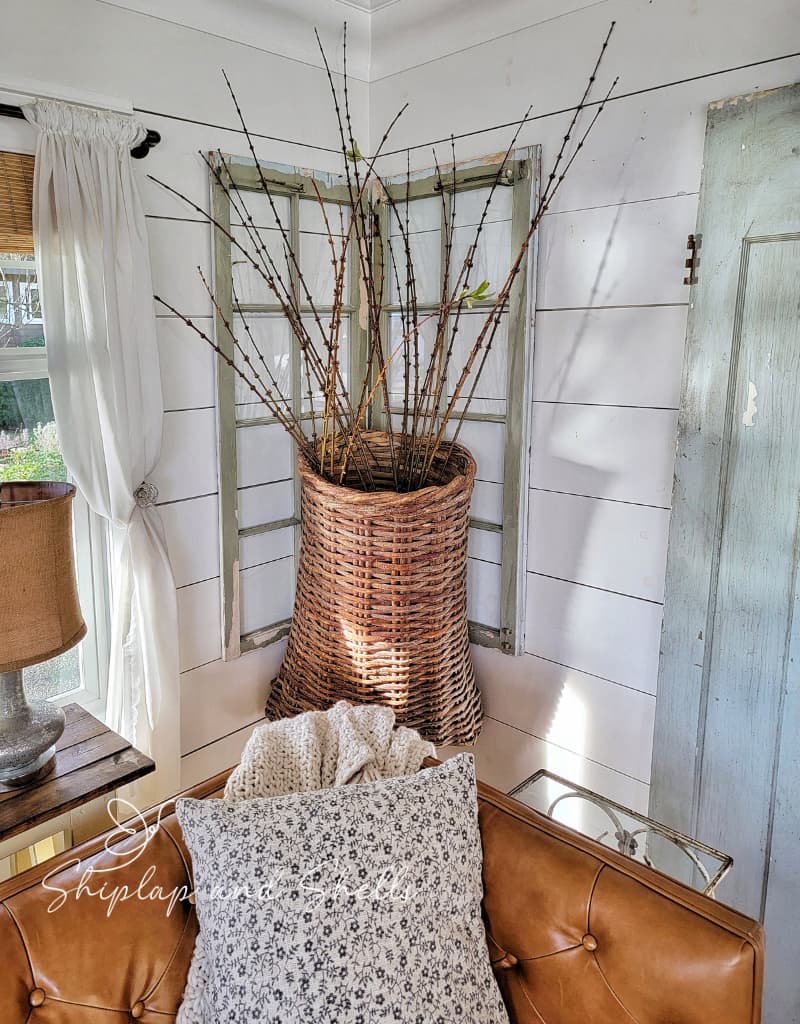
4: Once inside, place the branches in a tall vase filled with warm water. Optional: Add flower preservatives to help promote blooming.
5: Keep the vase in a cool location with indirect light and high humidity.
6: Once the buds have opened, move the branches into a well-lit indoor location.
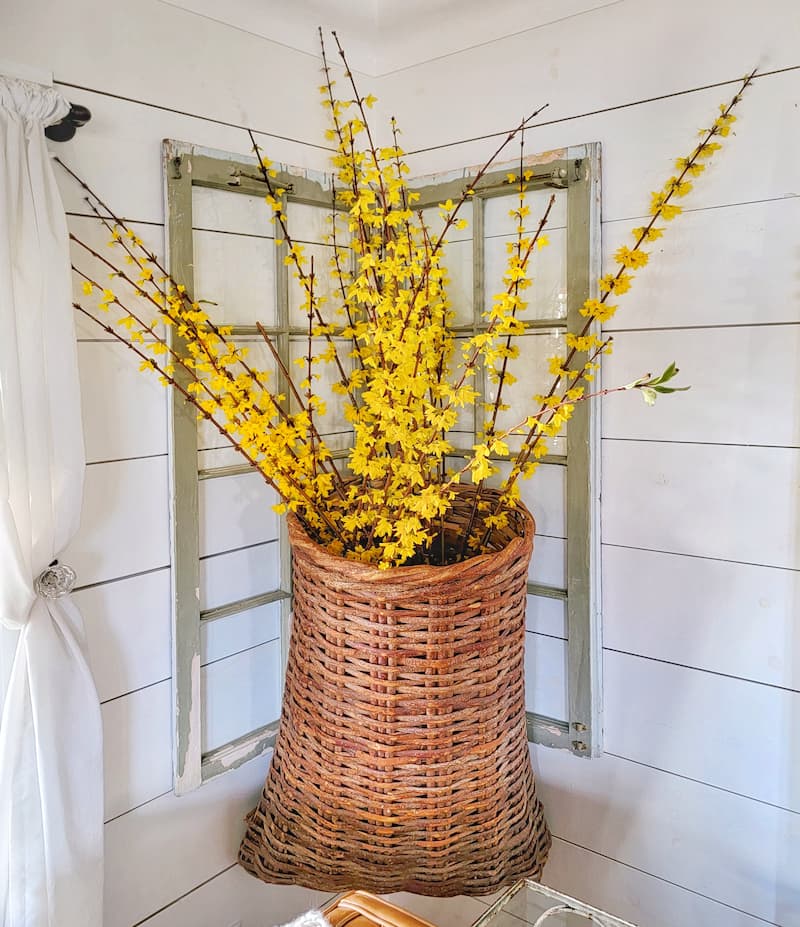
When cutting them from the tree, branches should flower within 1-2 weeks, depending on how far along your flowers are.
I usually start cutting forsythia branches in mid-January, and mine takes about a week to bloom.
How to Prune Branches Properly

All you need to prune spring-blooming branches for forced blooming is a pair of clean, sharp pruners, a bucket, a floral preservative, and a vessel. And, of course, a flowering tree or shrub.
When pruning branches, pick a day when the outdoor temperature is above freezing to help them transition from outdoors to inside your home.
Select branches that aren’t essential to the form of your shrub or tree. I always choose branches in the back of a tree or an area where it wouldn’t hurt to thin out to prevent overcrowding.
Be sure to use sharp and clean pruners to ensure that your cuts are clean and smooth. Although it’s a personal preference, cut stems that are 6-18 inches in length.
It’s essential to prune the branch correctly so it does not damage the rest of the tree or shrub you are cutting from. Right above a branch or side bud, so there is no stub.
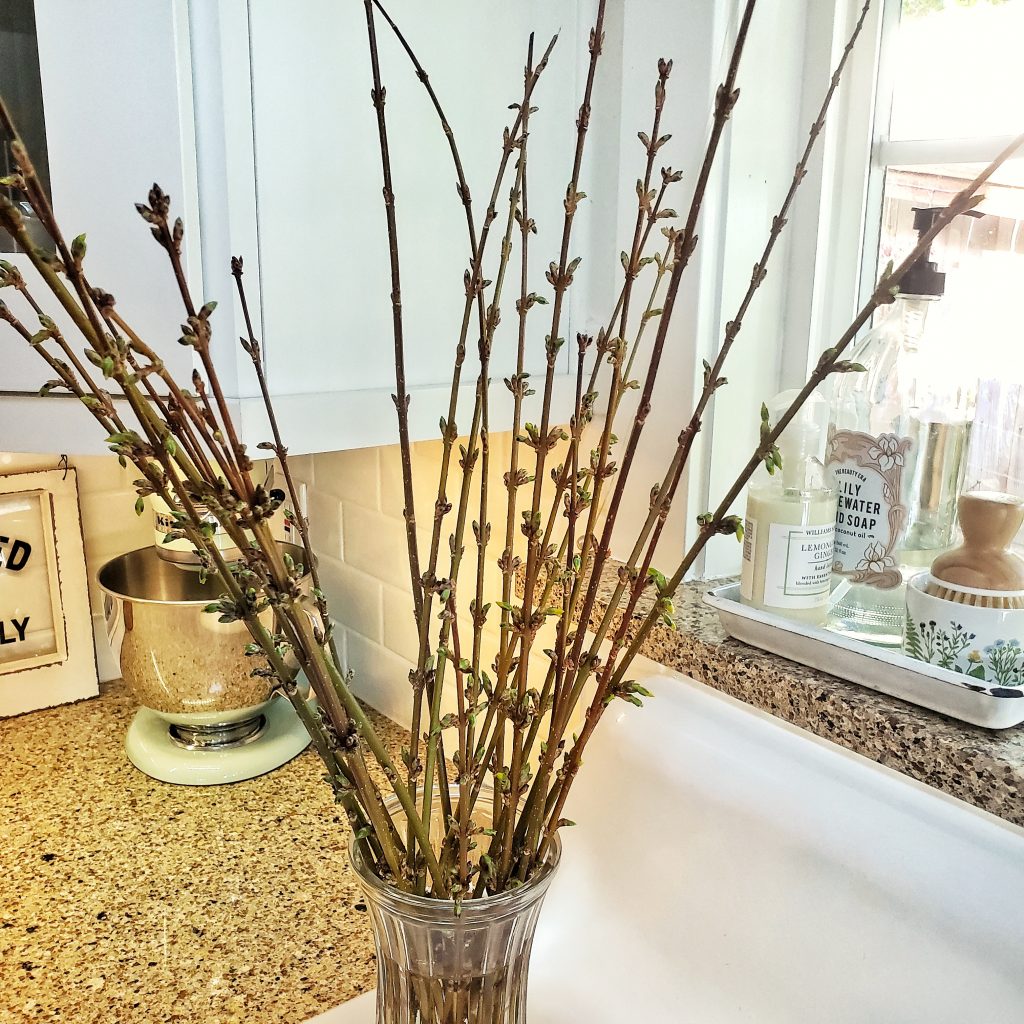
Trim off any parts of the branch that aren’t aesthetically pleasing and any branches that would touch the water once placed in the vessel.
Cut the base of the stem at an angle and crush the ends of the branch with a hammer to allow the water to absorb more quickly.
According to The Spruce, another alternative is crushing the ends with a hammer. When the stems are submerged in water, you can cut another inch off the bottoms. This second cut, performed underwater where air cannot act as a drying agent, will promote water intake.
How to Force Flowering Branches to Bloom

Place the branches in lukewarm water for several hours overnight. Switch them to a vessel or vase filled with warm water and floral preservatives the next day.
Move the vessel of branches into a cool place with no direct sunlight until the buds start showing color. Then, move them to an area with bright indirect light for more quality cut flowers.

For longer-lasting blooms, re-cut and crush the branch’s ends every few days. Change the water every 1-2 days to prevent bacteria from forming.
If the air is relatively humid, it will also help speed up the flowering process. If not, mist the branches every few days to provide moisture.
Flowering blooms should appear in a few weeks, depending on the variety. The branches of forsythia seem to take the least amount of time.
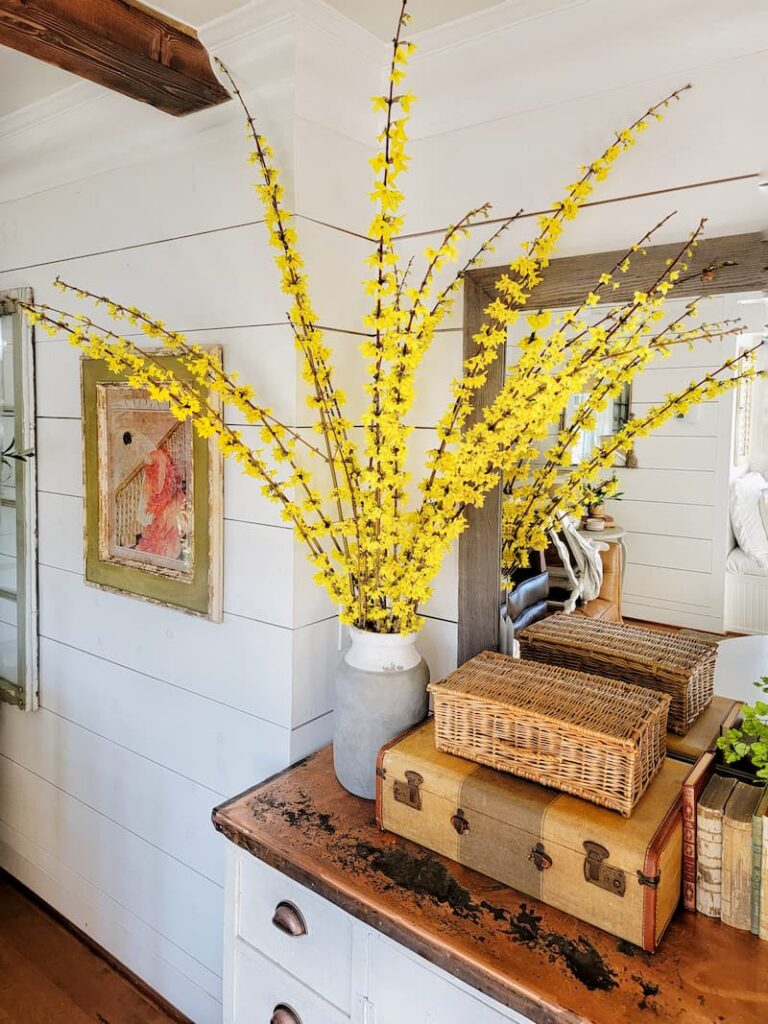
That’s it! It’s so simple to force bloom these spring-flowering branches. What a great way to make leaf buds bloom in less time than waiting for the higher temperatures to arrive.
You can experiment with any flowering tree or shrub in your yard. I’ve never forced lilac blooms, but I will try it, as well as rhododendrons, azaleas, and magnolias.
How Long Do Forced Branches Last?

The amount of time that forced branches will last indoors can vary. Typically, they maintain their beauty for about 1 to 3 weeks after blooming.
Several factors influence these blossoms’ indoor lifespan, such as the type of branch, the environmental conditions, and the care they receive.
Branches from early bloomers like forsythia and pussy willow tend to last longer, while delicate flowers like cherry and apple blossoms may have a shorter display life.
To maximize their lifespan, keep the branches in a cool room away from direct sunlight and heating vents, as excessive heat can quicken wilting. Changing the water regularly and cutting the stems fresh every few days can also help prolong their vibrancy.
Garden Supplies and Tools
Check out my favorite garden supplies and tools for the growing season. Whether you’re looking for potting soil or deer repellent, you’ll find what I use in my own garden.
Final Thoughts on Forcing Flowering Branches to Bloom Indoors
If you love bringing the natural elements outdoors, try force-blooming your fruit trees and other spring branches to create a beautiful display for your home until the end of winter.
Ready to become a flower whisperer? If you’re desperate for a dose of spring, forcing branches to bloom is your ticket to indoor garden magic.
And don’t just stop at one type of branch – mix it up! Combine delicate cherry blossoms with bold forsythia, or pair elegant magnolia with charming pussy willows. Each variety blooms at slightly different speeds, so you can create an ever-changing display until the real show starts outside.
Get ready to accept compliments from visitors who’ll want to know your secret to bringing spring into your home in the middle of winter!
If you have any questions or additional suggestions, please share them in the comments below. And be sure to share this blog post link with anyone who may find these tips helpful.
Until next time,
Happy Blooming!

Gardening Made Simple – Your Guide to Beginning Gardening
MORE POSTS
For You To Enjoy
Follow Me for More Inspiration
Shop my Amazon Storefront, LTK sources, and my favorite home decor, garden, and lifestyle products. When you purchase from one of my links, I earn a small commission, which helps me continue sharing all the content you expect on my blog.
Follow me on Pinterest, Instagram, Facebook, TikTok and LIKEtoKNOW.it. Do you like gardening? Join my Facebook Gardening Tips & Tricks group.










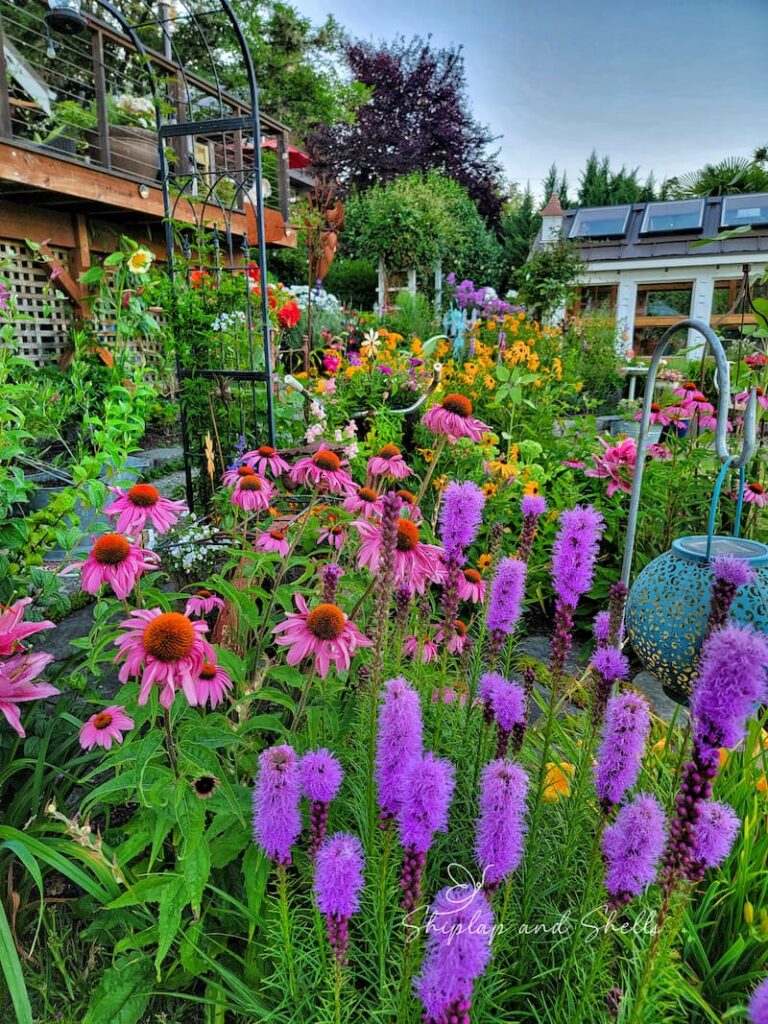


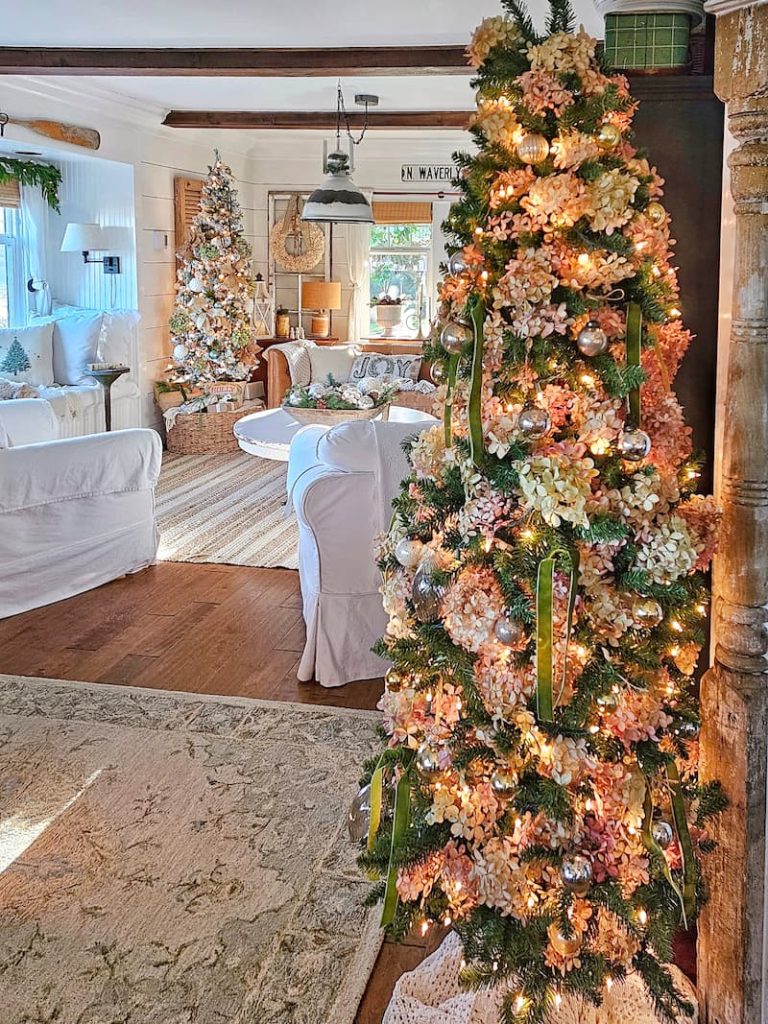
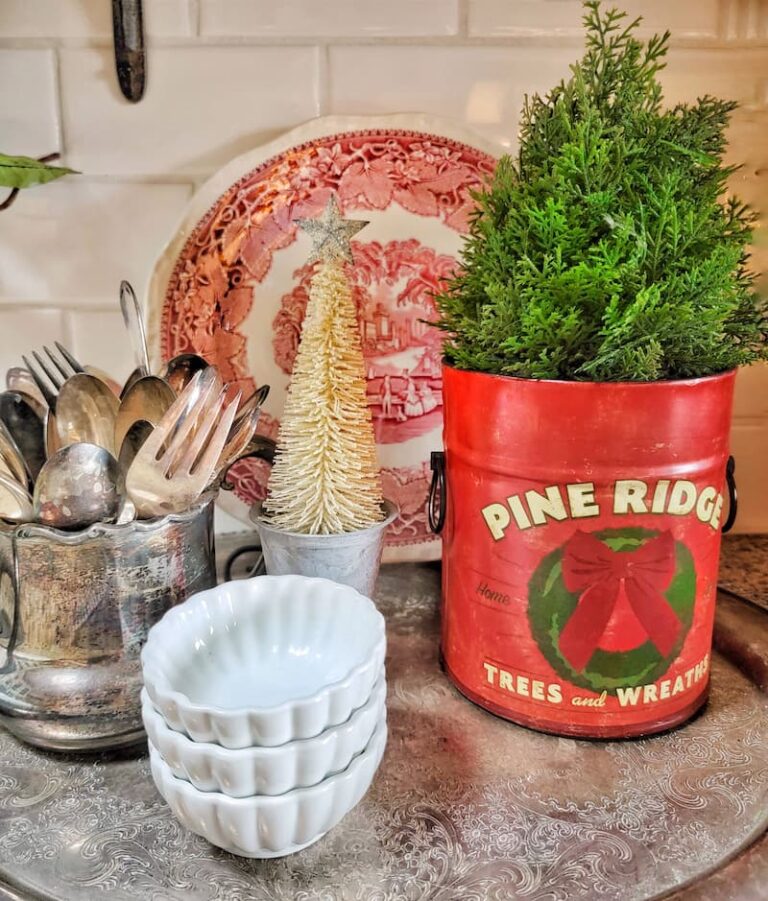
This is the most wonderful and informative article on how for force spring branches! You only make me wish I had spring branches here in Florida! My daughter has the most beautiful cherry trees up in Maryland, I am sharing this with her and encouraging her to bring a little spring inside! I am also sharing this with my readers! Thanks for the detailed information!!
Your posts always inspire me so much, thanks for all you teach me!
Kim, I JUST this week trimmed back my peach and apricot trees. I felt so bad all those branches were on the ground so I did this very thing! I have several branches in a large jug by the breakfast room fireplace and I’m hoping for some early blooms. Since I am mentioning this on my Saturday Meanderings, I want to include this post which has more information.
Hi Mary! I’m so happy to hear that you are enjoying your blooming branches in your home. I just got a bundle of forsythia stems from a neighbor. I can’t wait for them to bloom.
Thanks for the tips. I had no idea you could do anything to a branch once it’s cut, but makes sense. Yours are so pretty and colorful.
Love this one Kim! I love doing it too!
Love this so much!!!! Would you mind if I shared this on Thistlekeeping?
Happy day friend!
KariAnne
That would be so amazing! Thank you, my friend.
Your posts make my day – I always look forward to your gorgeous pictures. Makes me feel as though I can stop by for a cup of tea & enjoy your wonderfully comfortable home. Thx for all you do to make us smile. Happy New Year!? Michelle
This is such a great idea, would love to try this!
Kim,
I’ve been enjoying my blooms for over 3 weeks now. The branches are starting to get their leaves so they won’t last much longer.
Thank you for sharing this post. Beautiful photo’s.
Kim, I’ve tried this before but did not use floral preservative…maybe that’s why I had underwhelming results. Thanks for sharing. I just pruned my peach and apricot trees, but tossed the branches because I thought they may be diseased. Oh well, there is always next year.
I cannot wait to start forcing branches this year!!! Thanks for all of the tips (I never thought of waiting until above freezing). I’m sure that makes a huge difference.
Let’s hope for some beautiful early blooms!!!!!!!!!